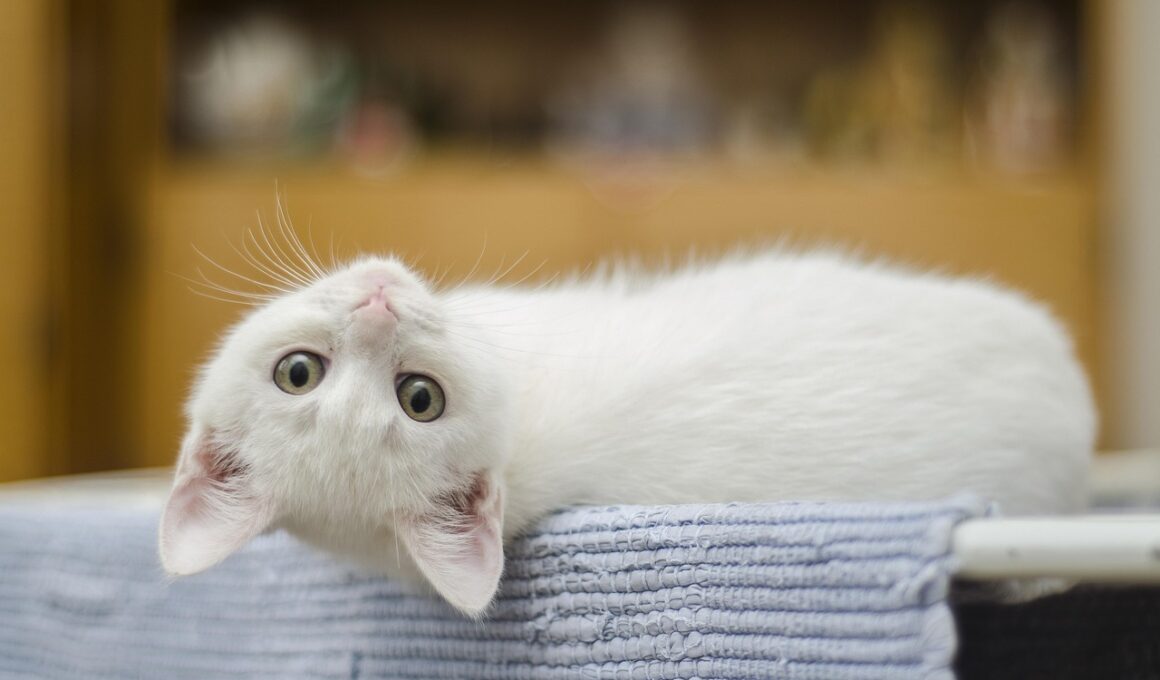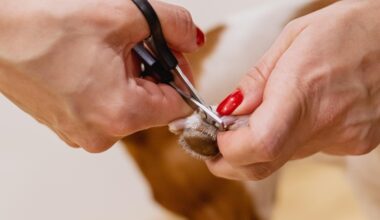Preventing Unplanned Litters: The Role of Spaying in Breeding Cats
Unplanned litters can be a common concern for cat breeders. Cats are known for their rapid reproduction rates, which can result in many kittens being born unexpectedly. Spaying is a surgical procedure that removes the ovaries and often the uterus of female cats, preventing them from becoming pregnant. This procedure not only helps manage the cat population but also decreases health risks associated with breeding. By spaying your cats, you can ensure that they won’t contribute to the ongoing cycle of overpopulation, giving shelters and rescue organizations a chance to care for those already in need. Furthermore, spaying can help calm aggressive behavior often seen in unspayed females. While some may worry about the surgery’s risks, it is typically safe and performed by veterinarians routinely. The benefits far outweigh the cons for most owners. Owners should consider spaying their pets not just for personal convenience but also for responsible breeding and caring for community welfare. Educating potential cat owners about the importance of spaying and neutering is essential for the future health of all cats.
The Health Benefits of Spaying
Spaying your female cat provides significant health benefits beyond preventing unwanted litters. One of the most profound benefits is that it eliminates the risk of certain reproductive cancers, including ovarian and uterine cancer. Likewise, spaying reduces the likelihood of developing pyometra, a severe infection in the uterus that can be life-threatening but is entirely avoidable through the surgical spaying procedure. Additionally, spaying often results in more positive behavioral traits. Spayed females are less likely to engage in yowling or excessive vocalization during heat cycles, which can be distressing for both the pet and the owner. Moreover, spayed cats tend to be more affectionate and calm, making for a more enjoyable pet experience. Besides health improvements and behavioral benefits, spaying helps maintain a healthy weight, as spayed cats often lose interest in roaming. Ultimately, responsible cat ownership includes addressing spaying and neutering as crucial components for pet wellbeing. The decision to spay should be made in consultation with a veterinarian, ensuring that you understand the best timing and approach for your specific cat.
The Economic Aspect of Spaying
Spaying can also be seen as a financially sound decision for cat owners. Although the initial costs of surgical procedures can seem daunting, the long-term savings can be substantial. Unplanned litters can lead to unexpected expenses associated with caring for kittens, such as food, vaccinations, and veterinary visits. Moreover, many municipalities impose fees associated with unspayed or unneutered cats, which adds to the financial burden. By investing in a spaying procedure, owners can avoid these high costs and ensure their cat’s well-being. Furthermore, spayed female cats typically lead healthier lives, which translates to fewer veterinary bills in the long run. Responsible cat ownership includes making choices to ensure the best possible life for your pet while also considering the larger societal implications. Many animal shelters and community programs offer low-cost spay or neuter services, making this procedure more accessible. Educating the public on this important issue can help elevate awareness and improve the overall health of both pets and communities. Assessing the economic benefits of spaying is critical to fostering responsible pet ownership practices.
Reducing Cat Overpopulation
Spaying plays a significant role in addressing the issue of cat overpopulation. Every year, millions of cats enter animal shelters, and without spaying and neutering, this problem will only continue to escalate. By spaying, owners help prevent their cats from contributing to this alarming statistic. Unspayed females can produce two to three litters each year, with each litter containing several kittens. Spaying helps break this cycle and is one of the most effective ways to control the cat population in communities. Responsible breeders must commit to spaying their pets, as it greatly reduces the number of unwanted kittens who may end up in shelters. The implications of overpopulation are vast; crowded shelters struggle to find homes for all the cats, leading to distressing situations where otherwise healthy animals are euthanized. By supporting spay-neuter initiatives, the public can impact local animal welfare positively. In addition to addressing overpopulation, spaying promotes healthier, happier cats, which ultimately creates a more pleasant environment for both pets and their owners. Engaging with local community programs dedicated to spaying can facilitate widespread change.
Community Initiatives for Spaying Education
Communities are vital in promoting spaying and raising awareness about its benefits. Many organizations run campaigns to educate pet owners on the importance of spaying and neutering. These programs aim to inform the public about the health benefits for pets, the potential for preventing overpopulation, and responsible breeding practices. These initiatives often provide low-cost or subsidized spay-neuter programs to help make the procedure accessible for all cat owners. Engaging local veterinarians in these campaigns can also enhance outreach, as they can provide expert information and recommendations. Additionally, hosting community workshops can effectively foster dialogue on this essential topic. Through partnerships with local animal shelters, breeders can share success stories and demonstrate the importance of spaying. Fostering a culture of responsible pet ownership can lead to significant improvements in the lives of cats and the community itself. Online platforms and social media can be used as tools for education, reaching a broader audience and encouraging conversations about feline health. Efforts to raise awareness should always be ongoing to keep the momentum alive for spaying initiatives.
Veterinary Support and Best Practices
To ensure the best outcomes for spaying, it is essential to consult with a qualified veterinarian experienced in feline care. They can provide detailed explanations about the procedure, expected recovery times, and any potential concerns that may arise. Each cat is unique, and factors such as age, health status, and temperament should be taken into account when deciding on the optimal time for spaying. Moreover, veterinarians often recommend preoperative examinations to ensure that your pet is healthy enough to undergo surgery. After the procedure, following the veterinarian’s aftercare recommendations is crucial to support recovery. Keeping a close eye on your cat post-surgery is essential, as it helps identify any complications promptly. Maintaining a low-stress environment can aid in your pet’s recovery. Implementing regular check-ins with a veterinarian post-spay can also help keep your cat healthy and address any concerns about behavioral or health issues that may arise. The ongoing support of a vet can be invaluable in keeping future health concerns at bay while ensuring that your cat remains a cherished member of your family.
The Importance of Lifelong Responsibility
Owning a cat comes with a lifetime commitment that includes taking proactive steps such as spaying. As a cat owner, it is essential to embrace the fact that spaying is not merely a one-time procedure; it is part of comprehensive long-term care of your pet. Educating fellow cat owners about the benefits of spaying can help foster a culture of responsibility and consequence awareness for kitten births. Additionally, it is vital to advocate for animal welfare alongside encouraging spaying initiatives. Responsible breeding means being aware of the potential outcomes of unplanned litters, which can lead to neglect, abandonment, or euthanasia of animals in shelters. Strong partnerships between local governments, veterinary clinics, and animal welfare organizations can create impactful campaigns that resonate with potential cat owners. The overall objective should be to erase the stigma surrounding spaying while emphasizing its crucial role in feline care. Promoting positive discourse about spaying and its benefits fosters a community committed to the health and welfare of cats. Ultimately, the responsibility lies with pet owners to ensure that their feline companions lead happy and fulfilling lives.


